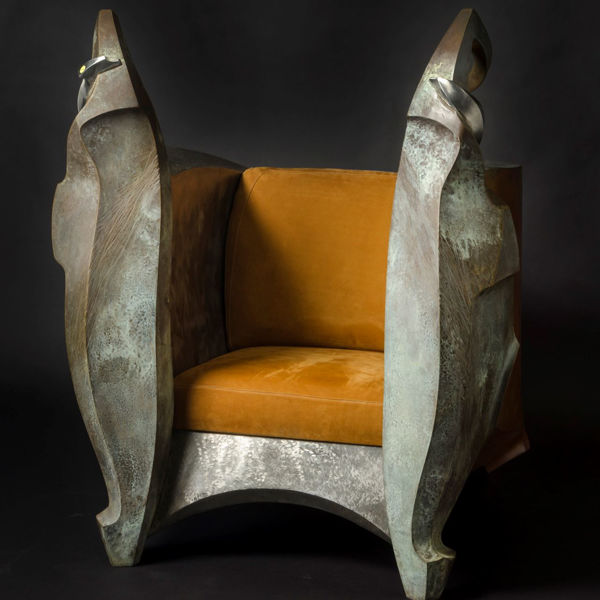Ceramics
Title: Burnt Baby Cannon
The “Mad Potter of Biloxi”, George Ohr [1857-1918] was an American ceramicist celebrated from his freely expressive and experimental clay forms — prefiguring the modern Abstract-Expressionist movement with his strange and loose understandings of clay. ‘Burnt Baby Cannon’ dumps functionality for a fascinating sculptural form, scaling down the body and appendages of the cannon to a strange, seemingly idle miniature now solely existent in the symbolic realm. Ohr’s use of particularly craggy and gritty clay (usually locally sourced from the Tchoutacabuffa river) lends a significant and effete textural depth, suggesting decay and the obsolete.
Title: Cat with Dog Mask
The projected anthropomorphic identity thrown on animal forms is often stronger than the human emote it epitomises, and Bova manoeuvres through this distinction with his collection of zoological ceramics that are set to human tasks and physical arrangements. Unlike other careful applications of realism and textural depth found in Bova’s oeuvre, ’Cat with Dog Mask’ makes no obfuscation of the red clay in which its built — the clarity of surface in opposition to the play on identity as the cat switches to a dog with a mask. Incised "Clay Dogs," G. Clark, Los Angeles on base. Artist's signature and date incised on base and on figure.
Title: Celebration
A brace of multicultural myth and classical drama informs the work of sculptor Michael Flynn, who’s figural ceramic ‘Celebration’ is packed with density of information in form and surface arrangement. Each of the three creatures is carefully composed and balanced for the resulting jubilant and gravity-defying bearing, the porcelain modelled by hand for a rough and expressive finish that conforms with the sense of dance-like activity, then sparsely flecked with colour to accentuate tiny movement or arrangement within the larger drama.
Title: Clouds
This white and black glazed vase is wheel thrown and then altered and reassembled to create organic cloud-like shapes. The piece, as with the series it is a part of, is influenced by traditional Korean art and design in which clouds are a commonly used motif. Chung draws on an ancient Korean decorating technique known as sanggam in his application of black pigments to the piece. As a Korean-American, Chung professes a personal affinity for the amorphous nature of clouds. Throughout all of his work, Chung plays with the balance between form, function, and design. This piece is damaged.
Title: Cochiti
Animal (Tic) Figure 2003 Earthenware with slip and black wild spinach





































